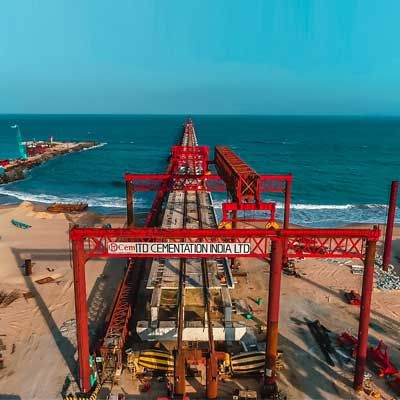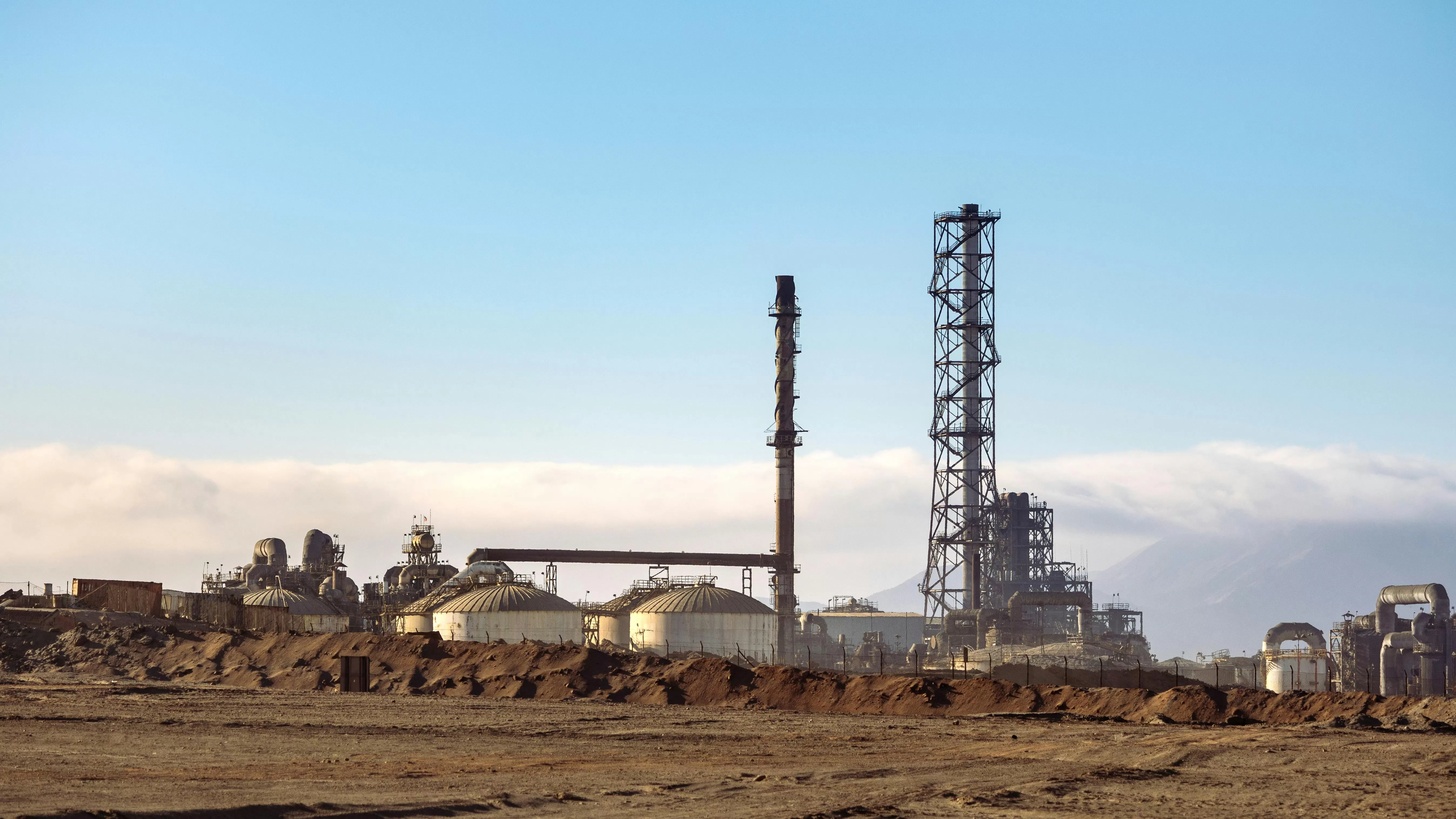Photo: For
representation purpose
Photo courtesy: ITD Cementation India
Of 1,698 central-sector infrastructure projects worth Rs 1.50 billion and above, 578 projects have reported time escalations (or, in other words, delays), 400 projects reported cost overruns and 202 projects reported both time and cost overruns with respect to their original project implementation schedules, while 374 are on schedule, as in November 2019, according to the Ministry of Statistics and Programme Implementation (MoSPI).About 93 projects have reported additional delays vis-à-vis their date of completion reported in the previous month (October 2019). Of these 93 projects, 26 are mega projects worth Rs 10 billion and above.
In November 2019, the total original cost of implementation of the 1,698 projects was Rs 20.41 trillion and their anticipated completion cost is likely to be Rs 24.41 trillion, reflecting overall cost overruns of Rs 4 trillion (19.63 per cent of the original cost). The expenditure incurred on these projects till November 2019 is Rs 10.50 trillion, which is 43.01 per cent of the anticipated cost of the projects.
However, the number of delayed projects decreases to 484 if delay is calculated on the basis of the latest schedule of completion. Further, for 728 projects, neither the year of commissioning nor the tentative gestation period has been reported. Of 578 delayed projects, 190 (32.87 per cent) projects are experiencing an overall delay in the range of one to 12 months, 121 (20.93 per cent) projects in the range of 13-24 months, 146 (25.26 per cent) projects in the range of 25-60 months and 121 (20.93 per cent) are experiencing a delay of 61 months and above. The average time overrun in these 578 delayed projects is 38.84 months.
Our story in the January 2019 edition highlighted that of 1,420 similar projects, 385 were then on schedule, 366 projects delayed, 358 projects reported cost overruns, and 136 projects reported both time and cost overruns with respect to their original schedules. The number of delayed projects has evidently increased since then.
Why the delay?
The major bottlenecks are delay in land acquisition, litigation, clearances from authorities, local agitation, execution delays by the contractor, poor project planning and monitoring, geological surprises, and inadequate funding and estimates.
“In India, litigations are the main cause of delay in completion of infrastructure projects,” says Vijay Agrawal, Executive Director, Equirus Capital. “These may be related to land acquisition, environmental impact or local groups affected by projects. We have witnessed delays of five to 10 years in most cases owing to litigations.” He cites the example of Hyderabad Airport being delayed by over three years because of litigation for environment reasons. He believes delays owing to land acquisition, permissions, project planning and monitoring can be avoided by proper coordination between various government departments. The delay in payment to contractors is another problem, he adds.
Besides land acquisition, obtaining clearances and funding tie-ups, Shubham Jain, Group Head & Senior Vice-President, Corporate Ratings, ICRA, points to shifting of utilities, removal of encroachment, geological surprises during execution stage and change in scope that take considerable time.
Generally, the Government’s efforts in addressing project delays are become increasingly proactive, notably in PPP projects, notes Siva Subramanian, Director, Infrastructure & Project Finance, India Ratings & Research (Fitch Group). MoSPI’s report is specific to central-sector projects; some of these are large in value and include atomic energy, metro-rail, rail connectivity and LPG pipelines. “These projects require significant coordination between various agencies. The trend indicates cost overruns of 17-20 per cent on central-sector projects from June 2018.”
In March 2015, the PRAGATI (Pro-Active Governance And Timely Implementation) platform was announced by the government. So far, a total of 269 projects with a total investment of Rs 12.30 trillion have been reviewed under the government’s PRAGATI platform.
Where’s the delay?
Timely completion is contingent on the availability of approvals, right of way (RoW) and prompt project funding. While the first two are in the concession granter’s hand, funding is a function of project debt viability and the financial position of equity sponsors. “Among the rated universe of projects, the least delays are seen in renewable projects and interstate transmission assets,” observes Subramanian, “while highway and urban development projects see considerable delays.” The plug-and-play model being spoken in Budget speeches is yet to take shape!
In terms of key segments, railways and hydropower have witnessed the maximum delayed projects, whereas National Highways have done relatively better, according to Jain. “Railway projects face delays because of land acquisition, design approvals, etc.” Many large projects in this sector have been ongoing for over a decade and costs have increased manifold. “Hydropower projects are prone to high geological risks and challenging execution, which often result in large delays in implementation and major cost overruns.” The roads sector fares better relatively owing to steps taken, such as awarding projects only after acquisition of majority of land and visibility on the balance land and the appointed date for the project being fixed only once 80-90 per cent RoW is available for National Highway projects.
Agrawal points to irrigation projects seeing maximum delays as well, because of geological surprises and inadequate funding—many have seen delays of over 10-15 years. “Better planning and funding can reduce such delays,” he avers. He cites the Kaleshwaram Lift Irrigation Project executed by the Telangana government, which was executed within estimated timelines and budget. In his view, solar projects, telecom and airports have seen least delays. “Most of these projects are executed in a secluded area after land acquisition,” he explains. “Hence, government agencies and contractors have better control over project execution.”
The stand required on land
Delay in land acquisition is known to be a key reason affecting project execution.
“The Government should not advertise until it has 80 per cent of land for a project in possession,” emphasises
Neeraj Vijay, Director, Chetak Enterprises. “To bid the project in a hurry, it usually notifies that 80 per cent land is available. But the notification of acquiring land and land actually in possession are two different things. If a project is bid out after possession, there will be less arbitration and fewer compensation cases, and less extension of buying and faster execution of projects.”
Here, Sudhir Hoshing, Joint Managing Director, IRB infrastructure Developers, notes, “If land is made available and utilities to be shifted are identified in time, I don’t think any major issues will remain. Yes, in certain states, there are issues of mining of sand, aggregates, etc; there are also no clear guidelines of royalty payments of such excavated materials. The authorities should ensure enough raw materials are available for building roads. In case any state has a peculiar requirement, it should be mentioned in the DPR and the cost of such items must be included in the project cost.”
The amendment of the Land Acquisition, Rehabilitation and Resettlement Act (LARR) 2013 was based on the premise that it would help stalled infrastructure projects to recommence.“According to the recent Economic Survey, of over 80 per cent of stalled projects, only 15 per cent were owing to issues in land acquisition,” K Jalandhar Reddy, Executive Director, KNR Constructions, points out. “The rest were stuck because of lack of funds, arriving at adequate compensation, land ownership, title, link documents, or other bottlenecks particular to the region. Hence, providing adequate funds and other remedial measures for the above will speed up land acquisition.”
Highway projects: No work orders till 80-90% land is acquired?
Reports indicate that the NHAI will not issue work orders for highway projects under the PPP mode unless 90 per cent of the land is acquired and all statutory clearances obtained.
Currently, projects can be awarded even with a lower amount of available land, says Jain, although there is a provision that the appointed date is to be fixed only after availability of 80 per cent RoW for HAM and 90 per cent for EPC. “Having said that, this can result in delay in appointed date after the award of the project if there is a delay in acquisition of the minimum required land. If the proposal of awarding projects only once 90 per cent of land and all clearances are in place is implemented, project execution can start quickly after award and overall execution pace will improve. Besides, streamlining utilities shifting and removal of encroachments can help in faster execution.”
Under HAM, the concession grantor aims to handover the project and issue the appointed date only after 80 per cent of land availability and the model allows scope reduction for the unavailable portion if it continues to be a challenge. “Developers are proactively seeking 3H (completion of land acquisition process, wherein land owners compensations are paid) for 80 per cent of the land prior to acceptance of the appointed date; there is significant delay seen in receipt of the balance portion,” says Subramanian. “As the de-scoping provisions of the concession agreements are not been adhered to, many projects are now lagging. While 90 per cent of land is required for EPC projects as payment is made on milestone payments, the impact is not equivalent to projects under HAM. Receipt of timely approvals and land and adhering to de-scoping provisions are critical to ensure timely and smoother completion of projects.” He points to the solar park model where the evacuation infrastructure and land made available upfront for construction could hasten project execution. A similar approach for other PPP projects would help bring time overruns under control.
Agrawal believes the move will expedite project execution and avoid cost overruns and delays. “NHAI will benefit by way of achievement of execution targets. Contractors will also benefit by way of timely execution within cost. However, this may delay award of projects in the interim period till land acquisition is done.”
Delay in appointed dates
In FY2018-19, 5,493 km of National Highways were awarded, which was 67.8 per cent lower than the 17,055 km awarded during the previous year. Further, the project award target has been reduced to 6,000 km for FY2019-20 from 20,000 km for FY2018-19.
Under Bharatmala Pariyojana, the Government awarded 178 projects with an aggregate length of 7,998 km till March2019, a mere 23 percent of the planned length of 34,800 km. As on June 30, 2019, there were 46 projects where the appointed date was due for more than three months. “The delay in awards is mainly on account of delay in obtaining prerequisite land for awarding projects,” says Agrawal. “Further, as on March 31, 2019, there were 1,495 NHs projects under construction or in the development stage. Of these, 453 development projects were running behind scheduled timelines owing to delay inland acquisition, utility shifting, non-availability of aggregates, poor performance of contractors, and delay in clearances and approvals.”
Most projects awarded in FY2019 are yet to receive the letter of allotment or appointed date. While most projects have received financial closure, “the delay is predominantly attributable to availability of 80 per cent of land to start the project,” says Subramanian.
Further, with the NHAI failing to give official approval for the execution of projects, five contractors recently exited eight highway projects.
Land cost impeding execution
Besides the operational challenges in land acquisition, the increasing cost of land has added to the overall burden on the authority or project owner. “Adequate planning and streamlining land acquisition can help to some extent,” says Jain.“NHAI’s plan of issuing land bonds may also help reduce its financial burden related to land acquisition cost to an extent.”
Land acquisition is currently handled by the respective concession grantor along with state governments and its cost depends on the location of the stretch. The cost of land acquisition has increased by almost three times in recent years; it continues to hover at about 25-30 per cent of the total capital expenditure for the construction of National Highways, adds Agrawal.
As Subramanian informs, The Right to Fair Compensation and Transparency in Rehabilitation & Resettlement Act 2013 was amended in December 2014 to provide higher compensation, resettlement and rehabilitation benefits to landowners.“This, coupled with the process of 3G/3H notification, has led to significant delays in the awarding of the appointed date, which hampers developers from optimally using their resources. Land acquisition is undertaken simultaneously for all projects, leading to significant fund requirement at the same time and delay in acquisition.”
Evidently, prioritising of projects and focused acquisition targets could enable faster execution. It’s time to get moving and shed the project paralysis!
- SERAPHINA D’SOUZA


















